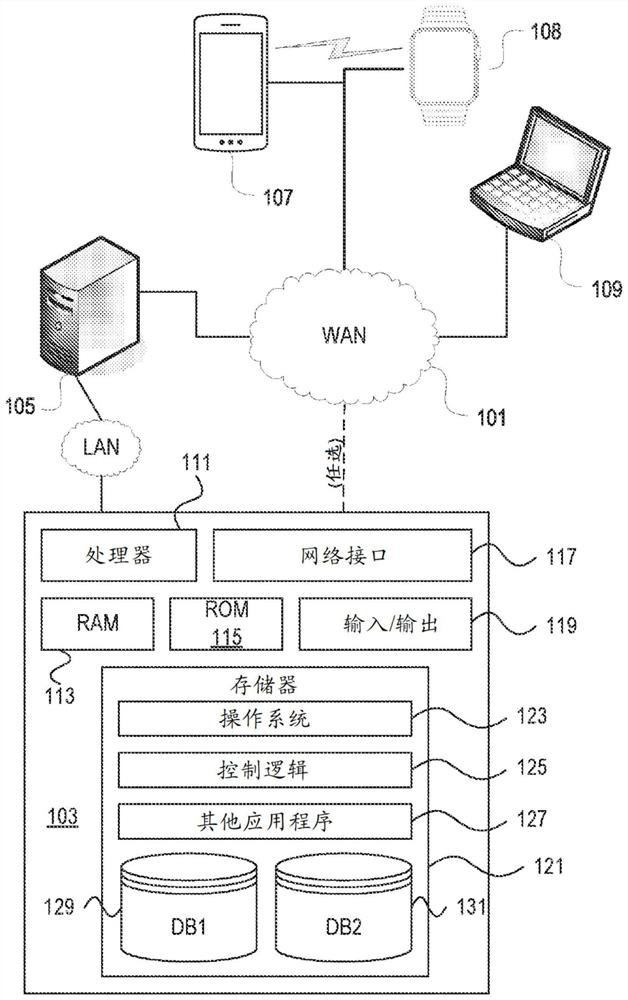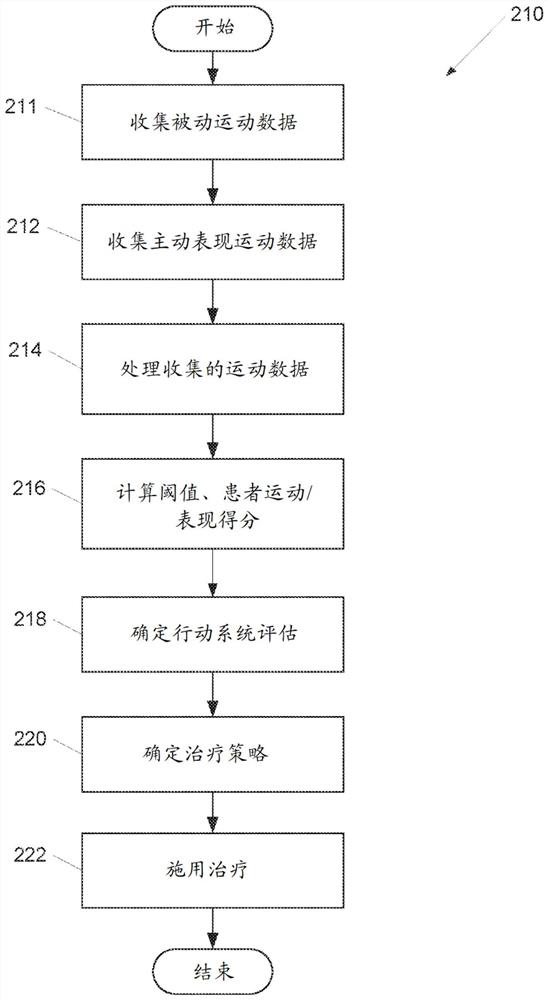Improvement of personalized health care in patients with dyskinesia
A technology of patient and exercise data, applied in medical science, diagnosis, diagnostic recording/measurement, etc., can solve the problem of lack of authoritative tests for Parkinson's disease
- Summary
- Abstract
- Description
- Claims
- Application Information
AI Technical Summary
Problems solved by technology
Method used
Image
Examples
example 1
[0072] The EQ-5D-5L is a self-assessed, health-related QoL questionnaire used to estimate PD patients. The scale measures QoL on a 5-part scale, including: 1) mobility; 2) self-care; 3) activities of daily living; 4) pain / discomfort; and 5) anxiety / depression. Each level is rated on a scale that describes the extent of the problem in that area (ie, no problem walking, mild problem, moderate problem, severe problem, or inability to walk). The questionnaire also features an overall health scale, in which PD patients choose a number between 1 and 100 to describe their health, with 100 being the best value imaginable. The EQ-5D-5L contains 3125 possible health states defined by combining a level from each scale, ranging from 11111 (full health) to 55555 (worst health).
[0073] As discussed above and in accordance with one aspect disclosed herein, sensors from smartphones and / or wearable devices (such as smart watches) can be used in daily life to measure the mobility behavior of...
example 2
[0078] The Parkinson's Disease Questionnaire 39 (PDQ-39) is a self-assessed QoL questionnaire used to estimate the health-related quality of Parkinson's disease. The PDQ-39 is used to assess patient difficulties on eight major QoL dimensions, each with several sub-items, including mobility, activities of daily living, emotional well-being, stigma, social support, cognition, communication, and physical uncomfortable. The QoL dimension can be scored on a five-point ordinal system: 0=never, 1=occasionally, 2=sometimes, 3=often, 4=always.
[0079] The total score for each PDQ-39 dimension can range from 0 (never had difficulty) to 100 (always had difficulty). Dimension scores can be calculated by determining the sum of the children on each dimension and multiplying by 100. Lower scores may reflect better QoL. The PDQ-39 total score can be calculated as the sum of the dimension scores divided by eight. The PDQ-39 questionnaire is used to help health and social care professional...
example 3
[0087] The Movement Disorders Society-Unified Parkinson's Disease Rating Scale (MDS-UPDRS) is a comprehensive QoL assessment designed to monitor the severity of Parkinson's disease over a longitudinal disease course and provide clinical advice to healthcare providers. The MDS-UPDRS assessment consists of 50 comprehensive questions to assess motor and non-motor symptoms associated with PD. The MDS-UPDRS consists of four components that add up to give a total score. The components of the assessment include: Part I, Non-Mobility Experiences of Daily Living (13 items); Part II, Activities of Daily Living (13 items); Part III, Mobility Examination (18 items); and Part IV, Mobility Complications (six items) ). Part I consists of two components, Part IA, which involves multiple behaviors assessed by investigators with relevant patient and caregiver information, and Part IB, which is completed by patients only. Each subscale is rated from 0 to 4, where 0=normal, 1=mild, 2=mild, 3=mo...
PUM
 Login to View More
Login to View More Abstract
Description
Claims
Application Information
 Login to View More
Login to View More - Generate Ideas
- Intellectual Property
- Life Sciences
- Materials
- Tech Scout
- Unparalleled Data Quality
- Higher Quality Content
- 60% Fewer Hallucinations
Browse by: Latest US Patents, China's latest patents, Technical Efficacy Thesaurus, Application Domain, Technology Topic, Popular Technical Reports.
© 2025 PatSnap. All rights reserved.Legal|Privacy policy|Modern Slavery Act Transparency Statement|Sitemap|About US| Contact US: help@patsnap.com



